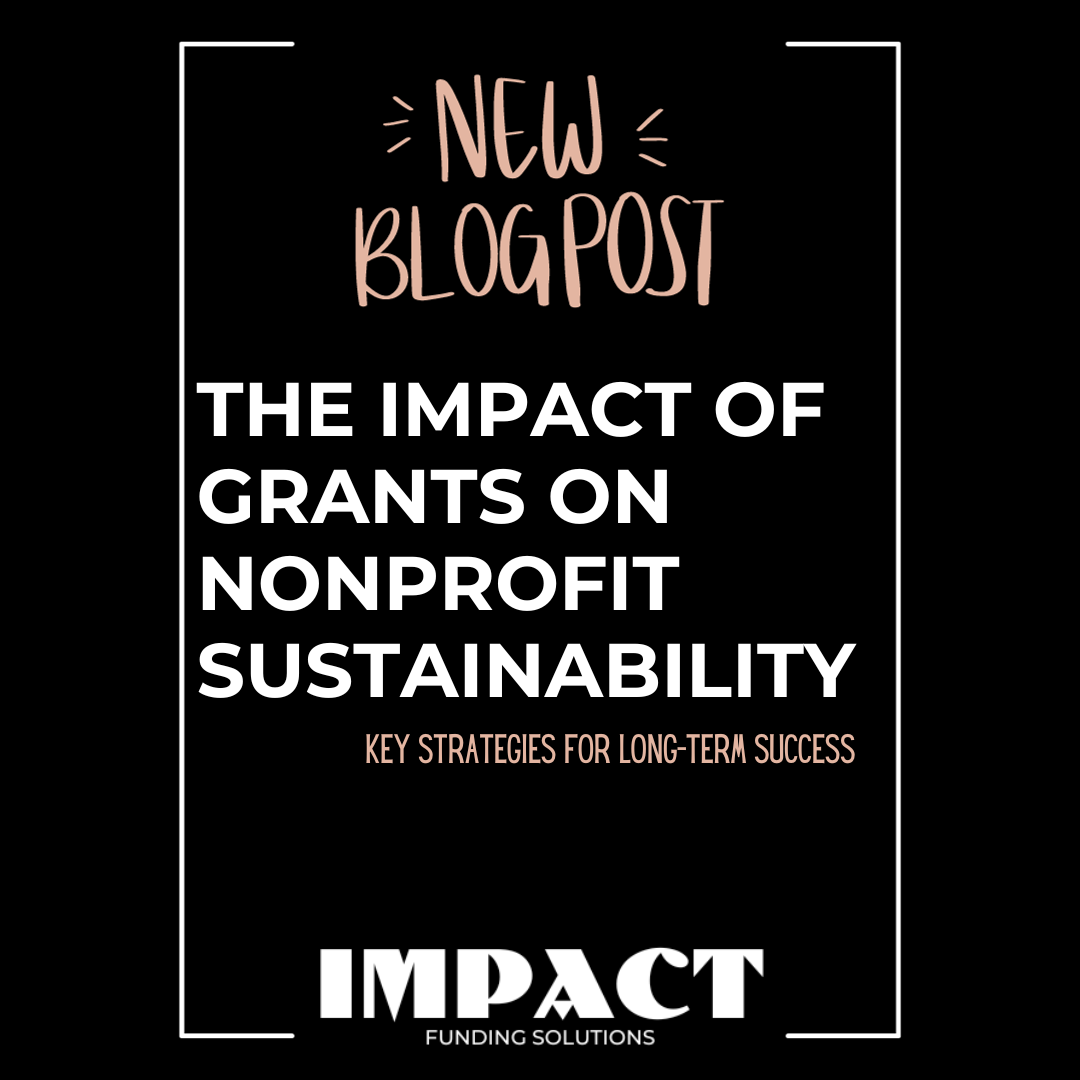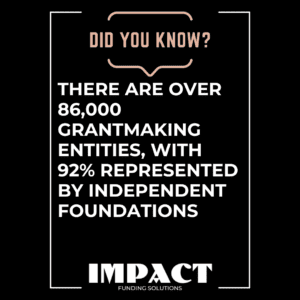The Impact of Grants on Nonprofit Sustainability: Key Strategies for Long-term Success

The Impact of Grants on Nonprofit Sustainability: Key Strategies for Long-term Success
There are over 86,000 grantmaking entities, with 92% represented by independent foundations - Instrumentl

Grants play a pivotal role in shaping the sustainability and longevity of nonprofit organizations. Securing funding through grants can empower nonprofits to fulfill their missions, expand their reach, and create lasting impact. In this blog post, we will explore the profound impact of grants on nonprofit sustainability and delve into key strategies that organizations can employ for long-term success.
Grant Writing Strategy and how it Impacts Nonprofit Sustainability
-
Opening Doors to Opportunities:
Grants serve as gateways to opportunities that might otherwise be out of reach for nonprofits. Whether it's launching a new program, expanding outreach efforts, or investing in critical infrastructure, grants provide the financial means to turn ambitious visions into reality. By securing funding, nonprofits can bridge gaps and take bold steps toward achieving their goals.
-
Enhancing Programmatic Impact:
Nonprofits are often defined by the impact of their programs. Grants enable organizations to enhance and expand their programmatic reach. Whether it's supporting educational initiatives, healthcare services, or community development projects, grants provide the necessary resources to amplify the positive change nonprofits can bring to their communities.
-
Building Organizational Capacity:
Sustainability goes beyond the immediate impact of programs—it involves building the capacity to endure and thrive. Grants can be instrumental in strengthening an organization's infrastructure, improving operational efficiency, and fostering the professional development of staff. These investments contribute to the long-term health and resilience of nonprofits.
-
Diversifying Revenue Streams:
Overreliance on a single source of funding can jeopardize the sustainability of nonprofits. Grants offer an avenue for diversifying revenue streams, reducing financial vulnerability, and ensuring a more stable financial foundation. By strategically securing grants, nonprofits can create a well-rounded portfolio of funding sources that insulates them from economic uncertainties.
-
Fostering Innovation and Adaptability:
The landscape of social challenges is ever-evolving, requiring nonprofits to innovate and adapt. Grants, especially those that encourage experimentation and innovation, provide the financial freedom necessary for nonprofits to test new ideas, refine their approaches, and stay ahead of emerging trends. This adaptability is crucial for long-term sustainability.
-
Strengthening Relationships with Stakeholders:
Successful grant applications often involve collaboration and partnerships. Building relationships with grant-making organizations, governmental bodies, and other stakeholders not only increases the chances of securing funds but also creates a network of support. These relationships can open doors to additional opportunities and resources, contributing to the overall sustainability of the nonprofit.
-
Strategic Grant Management:
Securing grants is just the beginning; effective grant management is equally critical. Nonprofits need to develop robust systems for tracking, reporting, and evaluating the impact of grant-funded initiatives. Strategic grant management ensures that organizations not only meet the expectations of funders but also learn and improve from each funding cycle.
-
Building a Culture of Philanthropy:
Long-term sustainability requires cultivating a culture of philanthropy within the organization and the community it serves. Grants can serve as catalysts for fostering this culture by demonstrating the value of financial support. Nonprofits can leverage successful grant outcomes to inspire local giving and engage community members in supporting their mission.
-
Investing in Long-Term Planning:
Grants provide the financial stability needed for nonprofits to engage in strategic, long-term planning. This includes developing comprehensive fundraising strategies, succession planning, and impact assessments. With a solid foundation of funding, nonprofits can invest time and resources in building a roadmap for sustained success.
-
Measuring and Communicating Impact:
Grantors often look for measurable outcomes and impact. Nonprofits that can effectively measure and communicate the impact of their programs are more likely to secure ongoing support. By investing in robust monitoring and evaluation practices, nonprofits can not only meet the reporting requirements of grants but also build a compelling case for continued funding.
Is your Nonprofit Maximizing it's Grant Strategy?
In conclusion, grants are not merely financial injections; they are catalysts for transformative change and sustainability in the nonprofit sector. By strategically securing and managing grants, nonprofits can enhance their capacity, diversify revenue streams, foster innovation, and build lasting relationships with stakeholders. The impact of grants extends beyond immediate programmatic success, contributing to the overall health and resilience of organizations committed to making a difference in their communities. Embracing these strategies is key to ensuring the long-term success and sustainability of nonprofits dedicated to positive social change.
Looking for assistance with your grant strategy? CONTACT US today to discuss how we can help.

